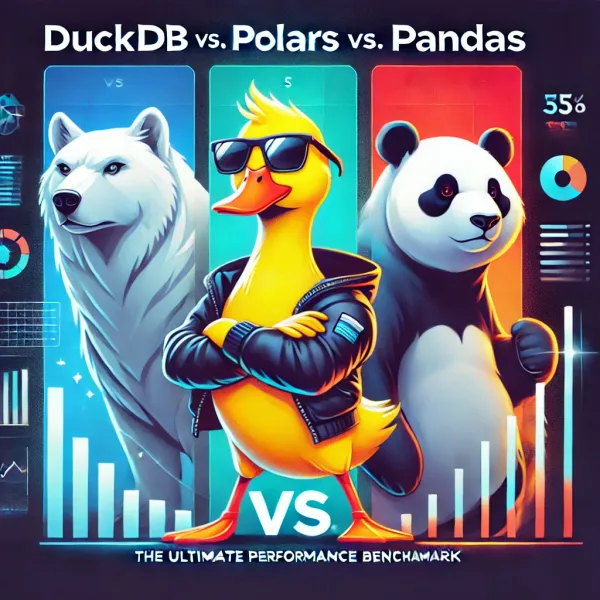RevTech and MarTech 101 for Developers


Imagine this: you’re a seasoned tech consultant or developer, certified in Salesforce, experienced in building custom CRM systems, and experienced with data science and machine learning. Suddenly, you find yourself teleported into a project with clients in the RevTech and MarTech and SalesTech sectors. What should you know to navigate this terrain successfully? This post serves as a quick guide to understanding the essentials of RevTech and MarTech for developers.
Understanding RevTech and MarTech
RevTech (Revenue Technology)
- Overview: RevTech is all about leveraging technology to optimize and increase revenue. It involves tools and platforms that enhance sales operations, lead management, customer relationship management, and analytics.
Key Aspects:
- Sales and Marketing Alignment: RevTech often bridges the gap between sales and marketing, emphasizing seamless collaboration and data sharing.
- Data-Driven Decision Making: Utilize data analytics to drive sales strategies, forecast revenue, and personalize customer interactions.
- Automation and Efficiency: Focus on automating sales processes, lead scoring, and customer follow-ups to improve efficiency and conversion rates.
MarTech (Marketing Technology)
- Overview: MarTech refers to the use of technology in marketing efforts. It encompasses tools for digital marketing, customer data analytics, content management, and automated marketing campaigns.
Key Aspects:
- Customer Journey Mapping: Understanding and tracking the customer’s journey from awareness to purchase, using analytics and CRM tools.
- Personalized Marketing: Leveraging data to tailor marketing messages and campaigns to individual customer needs and preferences.
- ROI Measurement: Utilizing technology to track and analyze the return on investment of various marketing campaigns.
For Developers in RevTech and MarTech
Embrace the Business Side: Understand the business goals and how your technical skills can contribute to achieving them. This means aligning your development work with revenue generation and marketing objectives.
Learn the Tools and Platforms: Familiarize yourself with common RevTech and MarTech tools beyond Salesforce and SAP. This could include platforms like HubSpot, Marketo, and Google Analytics.
And sometimes familiarizing yourself on Leading RevTech Platforms
- Outreach: Automates and prioritizes customer interactions.
- Salesloft: Enhances personalized sales experiences.
- Clari: Offers AI-driven revenue operations and forecasting.
- Gong: Provides conversation intelligence for sales calls.
- Apollo: A data-first sales platform.
- 6Sense: Delivers account-based marketing insights.
Integrate Data Science and ML: Use your data science and machine learning expertise to analyze customer data, predict trends, and automate processes. Machine learning can be particularly powerful in personalizing customer interactions and improving predictive analytics.
Understand Regulatory Compliance: Be aware of data privacy and protection laws that govern marketing and sales data, such as GDPR and CCPA.
Focus on User Experience: Whether developing a CRM or a marketing automation tool, the user experience for both internal teams and end-customers should be a priority.
Keep Learning and Adapting: The fields of RevTech and MarTech are rapidly evolving. Stay updated with the latest trends, tools, and best practices.
And all those you have to replicate and integrate in your pipelines like gitlab, jenkins, other CI/CD, and might need help with low-code/no-code platforms with automation so that non developers can insert data anytime.
Essential Sales and Marketing Metrics and Terminologies for Developers
1. Win/Loss Ratio (Success Rate)
- Definition: This ratio measures the number of successful sales (wins) against the number of unsuccessful attempts (losses) over a specific period. It's a critical metric for assessing the effectiveness of sales strategies and teams.
- For Developers: Integrating functionality to track and analyze this ratio can provide valuable insights into the effectiveness of sales tactics and customer engagement strategies.
2. Conversion Rate
- Definition: The percentage of leads or prospects that convert to customers. This metric is crucial for understanding the effectiveness of sales funnels and marketing campaigns.
- For Developers: Features that allow for detailed tracking and analysis of conversion rates can help in fine-tuning marketing strategies and improving sales funnels.
3. Customer Acquisition Cost (CAC)
- Definition: The total cost of acquiring a new customer, including all marketing and sales expenses. Lowering CAC while maintaining or improving quality of service is a common goal.
- For Developers: Tools that calculate and track CAC can be instrumental in budgeting and resource allocation strategies.
4. Customer Lifetime Value (CLTV)
- Definition: The total revenue a business can expect from a single customer account throughout their relationship with the company. It's used to determine the long-term value of customers.
- For Developers: Developing features that predict and monitor CLTV can help businesses in strategizing their long-term engagement and retention plans.
5. Churn Rate
- Definition: The rate at which customers stop doing business with a company. It is a key metric for understanding customer retention and satisfaction.
- For Developers: Implementing analytics to identify patterns in churn can aid in developing strategies for customer retention.

6. Return on Investment (ROI)
- Definition: A measure of the profitability of an investment. In sales and marketing, it relates to the effectiveness of campaigns and strategies in generating revenue.
- For Developers: Integrating ROI calculations can help in evaluating the effectiveness of different marketing strategies and sales campaigns.
7. Lead Scoring
- Definition: The process of assigning values to leads based on their likelihood to convert into customers. It helps in prioritizing leads for more effective sales engagement.
- For Developers: Developing algorithms for lead scoring can significantly enhance the efficiency of sales teams.
8. Pipeline Velocity
- Definition: The speed at which leads move through the sales pipeline. Faster pipeline velocities indicate more efficient sales processes.
- For Developers: Features that track and optimize pipeline velocity can boost overall sales efficiency.
Insights from Leading RevTech Platforms
Outreach: Streamlining Sales Engagement
- Key Features: Specializes in automating and prioritizing customer interactions with robust sequencing.
- Analyzing Insights: Track engagement rates and refine outreach sequences for better conversion.
Salesloft: Personalized Sales Experiences
- Key Features: Offers a platform for engagement and coaching, excelling in personalization and detailed analytics.
- Analyzing Insights: Understand customer interactions and tailor communications for improved response rates.
Clari: Revenue Operations and Forecasting
- Key Features: A revenue operations platform excelling in forecasting and pipeline management with AI-driven insights.
- Analyzing Insights: Anticipate revenue trends and make data-driven decisions using Clari’s forecasting tools.
Gong: Conversation Intelligence
- Key Features: Focuses on analyzing sales calls and meetings for insights into customer interactions.
- Analyzing Insights: Utilize conversation analysis to understand customer sentiments and successful strategies.
Apollo: Data-First Sales Platform
- Key Features: Combines data-first approach with engagement tools, offering databases for prospecting.
- Analyzing Insights: Identify high-potential leads and track the effectiveness of prospecting strategies.
6Sense: Account-Based Marketing
- Key Features: Specializes in account-based marketing, providing insights into buyer intent and timing.
- Analyzing Insights: Track account engagement and tailor marketing efforts to likely-to-convert accounts.
Tips for Developers Building RevTech Solutions
- Understand Business Needs: Start with a clear understanding of what the business aims to achieve with RevTech.
- Embrace Agile Development: Utilize agile methodologies for flexibility and continuous improvement.
- Focus on User Experience: Ensure the solutions are intuitive and meet the workflow needs of sales and marketing teams.
- Ensure Scalability and Flexibility: Build solutions that can adapt and scale as business needs evolve.
- Integrate Data Analytics and AI Thoughtfully: Use AI to provide actionable insights and enhance automation.
- Study Data Visualization: Most dashboards always have a data visualization, structure your data carefully so that those tables, databases and json can easily be transformed into a reports and nice visualization for easy discovery and data story telling.
- Forecasting: Which you don't or sometimes do involve on developing this.
- Prioritize Data Security and Privacy: Develop with a strong focus on data security and adherence to privacy regulations.
- Data Storage and Compliance Awareness: Be aware of data localization, For example, data from the Netherlands, Spain, the US, and Singapore should be stored within their respective countries. And you may also have to transfer them safely so ssh and virtualize private IP is essential.
- Test Rigorously: Regular testing is vital to ensure reliability and effectiveness.
- Stay Informed on Industry Trends: Keep up with the latest trends and technologies in RevTech.
- Foster Collaboration: Encourage teamwork between developers, designers, and business stakeholders.
- Prepare for Continuous Learning: Be ready to continuously learn and improve the solutions developed.



